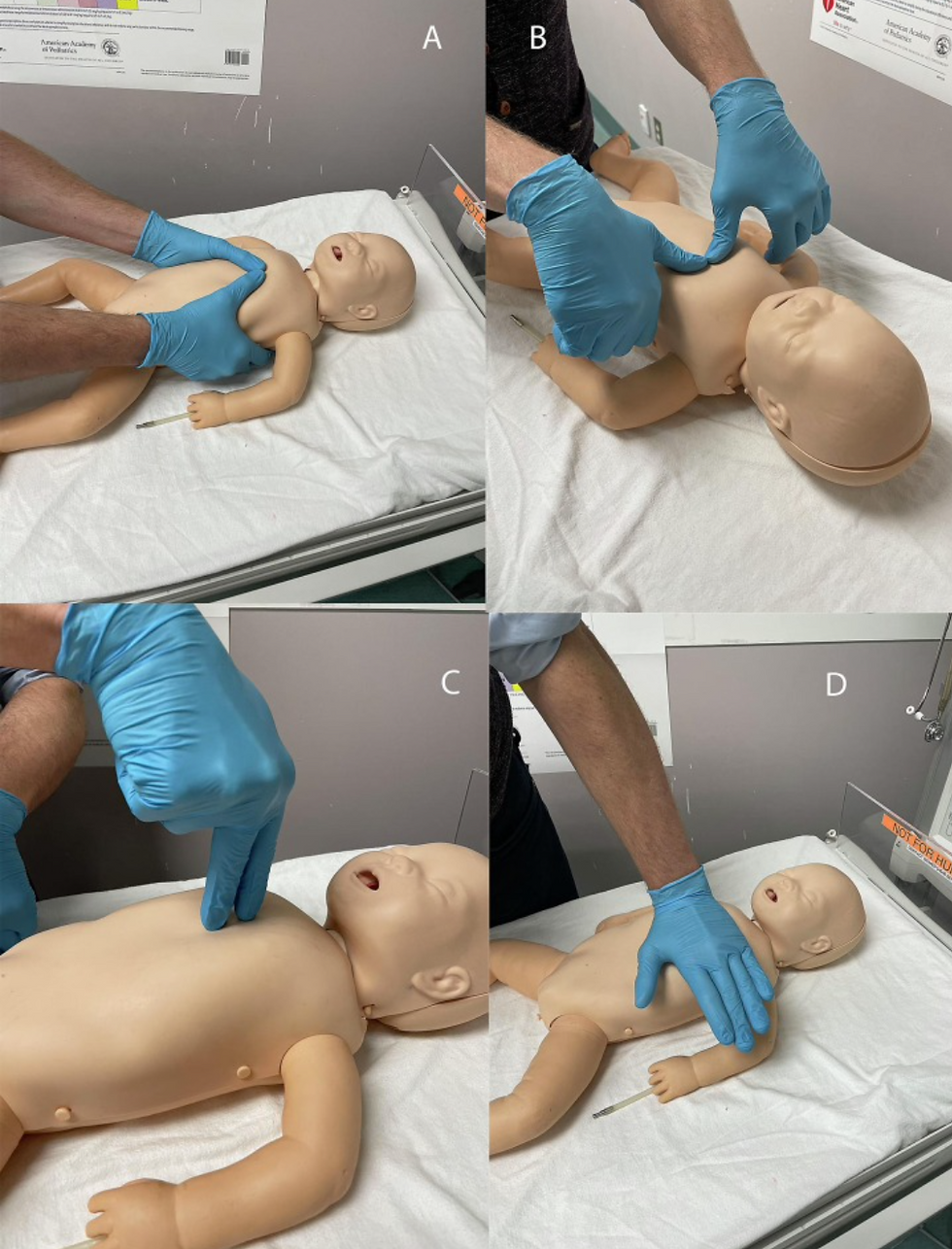Hand position during chest compression in infantile piglets - Do you need to encircle the chest with the 2-thumb-technique?
- georgschmoelzer
- Feb 12
- 2 min read
Background
The Pediatric Life Support Consensus on Science with Treatment Recommendations advises performing chest compressions (CC) using the 2-thumb-encircling technique. If the chest cannot be encircled, the 2-finger technique is recommended. However, there is limited data on the hemodynamic differences between these methods and alternative compression techniques.
Objective
This study aimed to compare the hemodynamic effects of four different compression methods during CC in a piglet model of infant asphyxia.
Methods
Nine asphyxiated infant piglets (age 5-10 days, weight 2.1-3.0 kg) were randomized to receive CC using one of the following techniques:
2-thumb-encircling
2-thumb
2-finger
One-hand
Each technique was applied manually for one minute while hemodynamic parameters were continuously monitored.

Results
Key findings from the study include:
The 2-thumb-encircling and 2-thumb techniques demonstrated significantly higher mean (SD) ejection fractions of 64.4 (30.6)% and 52.6 (31.2)%, respectively, compared to the one-hand technique at 26.6 (15.1)% (p = 0.005).
The 2-thumb-encircling technique produced a significantly higher ejection fraction than the 2-finger technique(64.4 (30.6)% vs. 30.4 (12.1)%, p = 0.005).
The 2-thumb-encircling and 2-thumb techniques resulted in significantly higher carotid blood flow and dp/dtmax, along with significantly lower dp/dtmin, compared to the one-hand and 2-finger techniques.
Conclusion
Both the 2-thumb-encircling and 2-thumb techniques produced superior hemodynamic outcomes, including higher ejection fraction, improved carotid blood flow, and better dp/dtmax compared to the 2-finger and one-hand techniques. Encircling the chest during the 2-thumb technique yielded similar hemodynamic benefits to the 2-thumb technique without encircling, reinforcing its effectiveness in pediatric resuscitation.
Implications
These findings support the current Pediatric Life Support recommendations, emphasizing the 2-thumb-encircling technique for optimal CC efficiency. This study highlights the importance of selecting appropriate CC techniques to maximize perfusion during infant resuscitation, potentially improving patient outcomes in real-world pediatric emergency settings.
























Comments